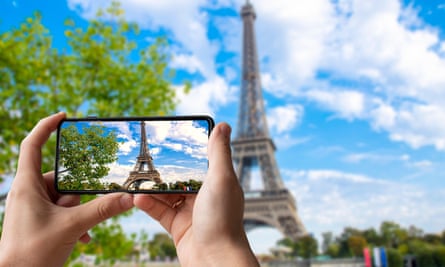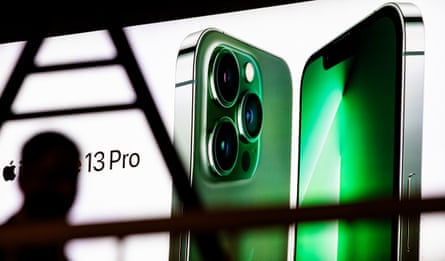Photos are precious records of our lives, and as the summer kicks off many of us will be adding to our collection as we enjoy holidays and celebrate special occasions.
For many of us, however, these pictures end up locked on our phones, taking up storage and at risk of loss.
Without proper and timely backups – or printed copies – a smashed, stolen or accidentally wiped phone could instantly wipe out snaps of your child’s first birthday, that once-in-a-lifetime trip or just that picture you love enough to make your wallpaper.
We’ve had a look at the best options for storage and printing, how much they cost and what you get for your money – and have a guide to how to take photos you will want to keep.
Storage solutions
More than just ensuring treasured memories are safe, backing up your photos makes them much more accessible from computers, tablets and even digital photo frames. Also, it can free up space on your phone so that you no longer have to continually delete things to make it work.
How do I back up photos?
It is extremely easy and there are many different options available from a range of companies, starting from the princely sum of free. The best will use an app to automatically upload your photos from your phone to secure cloud storage.
From there you can view them on apps and the web, meaning you can carry around access to every photo you have ever taken and relive memories at any time. However, there are other options if you would rather store them on your phone or device, or curate which ones are saved, or make some public or even sell them.

For regular snappers
Four of the best cloud photo backup systems are made by the traditional tech firms, Amazon, Apple, Google and Microsoft, most of which have a free tier and options to pay should you need more storage.
Backups from your phone happen over wifi or mobile data the moment you shoot a photo, which means your snaps are safe very soon after you’ve taken them. But be warned, taking lots of photos and backing them up while out and about can eat through your mobile data allowance if it is quite small. Normal phone photos typically range from one to 5MB each but special high resolution ones can easily be 15MB or more. If this is likely to be a problem, check the settings on the app and switch off the option to automatically upload shots via mobile data.
Apple iCloud
5GB free; 50GB 79p a month
If you have an iPhone, iCloud is Apple’s default backup and cloud storage system. It is where backups and documents of your iPhone or iPad are stored if you ever need to retrieve them.
It is quick and easy but you get only 5GB of space for free, which is typically only enough for a backup of the apps and some photos on one or two devices. Photos and videos can be automatically uploaded to iCloud and then viewed on other Apple devices or the web. Windows PCs can back up photos to iCloud but Android devices cannot. Photos from a camera can be manually uploaded via a computer, too. If you use an iPhone provided by your employer you may not be able to or want to use a personal iCloud account on it.
It costs from 79p a month to upgrade the space to 50GB, which should be enough for most people’s entire collection of photos and videos.
Google Photos
15GB free; 100GB £15.99 a year
Google Photos is the default picture backup system on most Android smartphones but is cross-platform and available on iPhones, iPads, Macs and Windows PCs, plus the web, too.
Photos uses the same free 15GB of storage shared with your Gmail and Google Drive. It automatically backs up your photos and videos using the Google Photos app and lets you view, organise, search, edit, share or clear them from your phone’s storage. Shared photo albums can be made with anyone with a Google account, making collecting snaps from group holidays or events a doddle.

You can back up photos and videos in “storage saver”, which compresses them to save space reducing quality slightly in the process, or the larger original quality. Photos will even back up the digital equivalent of negatives, called RAW files, from some cameras.
You can use a different Google account from your main one to use the free 15GB only for photos. Google One plans add more space starting at £15.99 a year for 100GB, which will be plenty for most people. You can manually upload photos from a camera using the web, too.
Google lets you print off photo books costing from £15.99 plus delivery – you can choose pictures and layouts and add captions before you do.
It also integrates with Assistant smart displays such as the Nest Hub, turning them into excellent digital photo frames.
Microsoft OneDrive
5GB free; 1TB with Microsoft 365 £5.99 a month
Microsoft’s OneDrive is a general cloud storage drive that can also automatically backup photos and videos on Android, iPhone, Mac or PC. You can manually upload photos from a camera via a computer or the web.
It lacks some of the more advanced features of Apple or Google’s tools but you get 5GB of space for free. The most appealing part of OneDrive is that you get a huge 1TB of storage if you have a Microsoft 365 account, which is the subscription service for Microsoft Office that costs from £5.99 a month.
Amazon Prime Photos
Unlimited photos, 5GB of videos £7.99 a month
Amazon offers unlimited automatic photo backups from Android and iPhone, plus PC or Mac via a browser or desktop apps, as part of its Prime subscription, which starts at £7.99 a month. The phone apps allow you to organise, search, edit and share photos. Up to 5GB of videos are also backed up with extra storage available for a fee if needed.
Prime Photos integrates with Alexa smart displays such as the Amazon’s Echo Show line, turning them into good-looking digital photo frames.

Local backups
If you want to back up your photos for free without using the cloud, manually storing them on a computer or external drive is another option. You can transfer photos to your computer from your phone simply by plugging it in via USB, as you would a storage drive. From there you can transfer them to an external drive for safekeeping. I recommend storing them in at least two locations in case of theft or fire.
For enthusiasts and pros
If you are looking for a place to show off your photos, there are cloud photo services geared more towards enthusiasts or professional photographers that offer hosting with a portal to show them publicly or license them for use.
Adobe’s Creative Cloud offers the Lightroom photo development app and 1TB of cloud storage for £9.98 a month. SmugMug offers unlimited photo storage, a personalised photo site and desktop and mobile apps for $11 (£8.79) a month. SmugMug-owned Flickr offers storage for 1,000 photos for free, with 50 kept private and the rest made public, or unlimited photo storage from £6.99 a month. 500px is another alternative that promotes licensing of photos for money, with free accounts limited to seven uploads a week and unlimited accounts starting at $6.49 a month.
What about videos?
Most cloud photo backup services support videos, too, but the size of video files quickly eats into your storage limits. Videos shot in 4K at 60 frames a second on an iPhone, for instance, require about 400MB a minute or about 90MB if reduced to 1080p resolution.
Some backup services have restrictions on the size or quality of the video, or options to compress it to save space. Local backup or large general-purpose cloud storage drives can offer cheaper alternatives for manual backing up of lots of videos.
Printing options
It can be nice to have cherished photos in a physical form. The most popular options include 6x4in (10x15cm) single prints and photobooks.
Some of the photo backup firms have printing services but for those that do not there are many online or in-store alternatives. You can print from your computer, phone, camera or memory card with most.
Snapfish is a longstanding service offering individual prints costing from 10p or photobooks from £10 plus delivery. Warwick-based Cewe specialises in photobooks from £5.99 plus shipping and also runs Boot’s photo-printing services.
The high street chain SnappySnaps offers in-store and online photo printing from 65p for a single photo. Max Spielmann runs Tesco’s photo services and offers similar, from 35p for singles or from £15 for photobooks. Many larger supermarkets have photo-printing kiosks, too, for instant prints. Most services offer bulk rates, if printing hundreds of photos.

The best photobook services give you the option to create one with only a few clicks or spend hours customising them. If you go for the simplest version, you will typically get a book with a photo, or photos, on each page, and no bells and whistles.
The customised options mean putting in more time to choose and arrange your photos. Many services offer different themes or framing options, from simple white borders to fancy designs based on the season or events such as holidays or family gatherings. You upload your photos, crop and move them between boxes on the page, and add captions and titles. Most will let you save your projects before printing them, too, so you don’t have to do it all in one sitting.
Framing your work
Digital photo frames display a rotating slideshow of your photos. They come in various sizes and capabilities, with the cheapest models starting at about £55. However, be warned, even more expensive ones are hamstrung by poor interfaces and difficulties in making photos fit properly.
If you use either Google or Amazon’s photo backup solutions, their smart displays, which start at as little as £50, make better digital photo frames that can show curated or automated selections of your snaps and provide many more features for the price.
Great photos in your pocket: the best cameraphones
The best camera is the one you have on you, which these days usually means the one on the phone in your pocket. Camera quality is the current battleground between the big manufacturers, which means there are some great options. But if taking the best possible photos is important to you, you’ll need to spend a at least £600 on a high-end phone.
Google Pixel 6, £599
Arguably, the best bargain in high-end smartphone cameras is Google’s Pixel 6. Its main 50-megapixel camera is one of the best you can get on a phone, capturing a stunning amount of detail across a large range of conditions, including low light. Its 12MP ultrawide camera is good, too, but the phone lacks an optical zoom leaving you with digital zoom up to 7x. Stick to 2-3x and you will get good results. The Pixel 6 Pro at £849 has an extra 4x optical zoom camera, which is excellent, too.

Apple iPhone 13 Pro, £949
Apple’s best iPhone also has its best camera. All three of the iPhone 13 Pro’s 12-megapixel cameras – main, ultrawide and 3x telephoto – are among the best available, producing sharp, detailed and balanced shots in a variety of lighting conditions. The 3x optical zoom camera is particularly good, and meaningfully closes the distance to objects compared with previous models but falls short of some extended zooms such as that from Samsung.
Samsung Galaxy S22 Ultra, £1,149
Samsung’s biggest, most expensive mobile, the S22 Ultra, also has the most powerful and adaptable camera you can get. It has a fantastic 108MP main camera with excellent low-light performance and a very good 12MP ultrawide camera. However, it is the pair of 12MP telephoto cameras on the back with a 3x and 10x optical zoom that is unbeatable, getting you closer to faraway objects than any other phone.
